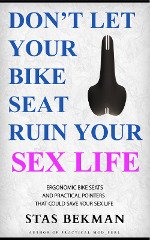03 Collectable Model Train Grading Standards And Other jargon
Description
This article is from the Model Trains FAQ, by Christopher D Coleman with numerous contributions by others.
03 Collectable Model Train Grading Standards And Other jargon
What are Grading Standards and what do they mean?
These standards were set forth by the Train Collectors
Association andshave been accepted as the means for identifying a
piece's appearance.sThey give no information on its operational
condition. The exactsinterpretation of these levels is somewhat
subjective.
* Mint: Brand new, absolutely unmarred, unused in original box
* Excellent: Minute scratches or nicks, no dents or rust
* Very Good: Few scratches, no dents or rust, exceptionally clean
* Good: Scratched, dirty, with small dents
* Fair: Well-scratched, chipped, dented, rusted or warped
* Poor: Badly damaged, use for parts
Other collectors jargon you may see:
* OB: original Box
* LN: like new - used but otherwise in Mint condition.
* MIB: mint in box, may have been unpacked but in mint condition.
* NOB: new with original box, may or may not have been used.
* Prewar: Manufactured 1943 or before.
* Postwar: Manufactured 1944 or after - for Lionel this period lasted
until 1969, 1966 for Flyer, and 1975 for Marx.
* MPC (Model Plastics Corp.) or FUNDIMENSIONS (later name) or
KENNER-PARKER TOYS (even later name): The division of General Mills
which produced Lionel and Flyer Trains under license from the old
Lionel Corp. from 1970 to 1986.
* LTI (Lionel Trains Incorporated): The maker of Lionel and Flyer from
1986 to 1995.
* TMCC: Train Master Command Control - Product of Lionel that allows
remote control of many model railroading operations.
* Lionel LLC (Limited Liability Corporation): The maker of Lionel and
Flyer since 1995. LLC comes from Wellspring LLC, the investment firm
which purchased Lionel.
* die: the mold used to form plastic or metal parts.
* clockwork: a wind-up train using a coiled spring as power.
* live steamer: a train operating on a real boiler/piston arrangement
using real steam, usually heated by an alcohol burner.
* railhead: the top circular or rectangular part of the rail.
* prototype: the real object you are modeling.
* spur gear: two normal gears meshing straight teeth.
* worm gear: corkscrew gear meshing with a gear with slanted teeth.
* tender: the car that carries fuel and water for a locomotive.
* sequencer (E-Unit): a device that automatically changes the direction
of a universal motor when the power is interrupted.
* York: very large train meet in York, PA put on by the TCA.
Continue to:

